Fragile Milano takes the (daringly-hued) road less traveled.
In Living Color
If Milanese gallery Fragile Milano had a spirit animal, it would be the bird-of-paradise: colorful, singular, unforgettable. It’s not often that one finds a high-end establishment so prepared to throw caution to the wind in support of its own unique and provocative vision. Defying the prevailing trends, celebrating the radical, and, at the same time, retaining a strong sense of tradition, history, and rigor, Fragile Milano is a heady mix of seemingly contradictory elements. We recently paid a visit to the gallery on busy Via San Damiano—a daringly multi-hued space designed by the legendary Alessandro Mendini—to learn just what makes this rare bird tick.
Fragile began as the experimental brainchild of director and founder Alessandro Padoan, who opened the gallery 15 years ago at the ripe young age of 27. He arrived at design via a rambling path that included studies in psychology, followed by various jobs and tangents into antiques, historical vehicles, and other brocantage. Little wonder, then, that his approach to managing, running, and curating Fragile Milano is also somewhat unorthodox. “When I pick the objects for our collection, I do so as both a gallery owner, who chooses his pieces according to his educational, philological, and market background, and as a brocanteur, who can’t help buying pieces which might, at first glance, appear out of place,” says Padoan. This strong belief in his own point of view, regardless of whether it seems readily coherent or easily digestible from the outside, is reflected in almost everything Fragile does. And it’s what makes the gallery one of the most unpredictable, and thus most stimulating centers of design in Italy today.
The gallery’s two-year-old, 200m2 interior is a case in point. With its mint and rose colored walls and boldly vibrant, graphic floors, the two-story exhibition space is about as far as one can get from the contemporary penchant for cool, raw backdrops—a.k.a. the white cube. But what else would you expect from Mendini, the godfather of radical design? “Fragile gave us the opportunity to create an interior full of energy, a showroom that is unlike anything in the panorama of Milanese design,” explains Mendini. “It's a bold and colorful place that reacts actively to the presence of the objects on display.” In an understatement typical of someone so used to defying the norm, Padoan notes that the new location “isn’t a neutral space as commonly found in other galleries, but an exhibition object in its own right: you can visit Fragile without even a glance at the pieces for sale, but just to admire Mendini’s work.” We recommend that anyone who finds him or herself in Milan do just that; chances are, however, that design lovers won’t be able to restrain themselves from exploring in detail the delightful, often whimsical—but always seriously high quality—collection of Italian 20th- and 21st-century furniture, lighting, and collectibles ensconced within the charming surroundings.
Fragile deals in vintage pieces from Italian designers like Gio Ponti, Franco Albini, and Carlo Scarpa—familiar and lesser known masters who embody the tremendous creative energy that poured forth from Italy in the postwar, modernist era. At the same time, the gallery (which also hosts a second location in Paris) commissions new works from contemporary designers—often established leaders who made their mark in the previous century. The roster includes Marco Zanuso Jr., Carla Venosta, and of course Mendini himself. A strong postmodernist thread runs throughout Fragile's program; Padoan's nod to a movement that, in his estimation, continues to have influence today. “Postmodernism generated a sort of creative flood that has lasted 40 years,” Padoan explains. “I believe Italian creativity drained away after postmodernism. Contemporary design here [for the most part] is something different; more focused on market, industry, the study of new materials for new features, but with a view back to historical design, too. This continuous connection and reinterpretation of our history is proof that the past is much more interesting than the present.”
And yet, Fragile is by no means a backwards-facing venture. Rather, it’s actively forging a distinctive bridge between the past and the future. Renowned designer and architect Marco Zanuso Jr., for example, is working on a range of new projects in collaboration with the gallery, the most recent of which is the TAMISO collection: a family of handmade tables, consoles, and centerpieces intricately constructed from a variety of solid wood industrial remnants. Zanuso bemoans the lack of diversity in the Milan design scene, saying that although many of the world’s most important design brands are based there, “We don’t have as many design galleries as, for example, Paris, London, or the United States. [In this way] the work of Fragile is original and kind of pioneering. I like the way Fragile mixes contemporary with modern—and, within the modern works, also mixes the great Italian ‘good design’ with the postmodern and ‘radical’ design.”
Then there’s Mendini’s latest creation for Fragile, the DERIVA series of ceiling lamps, which debuted at Salone del Mobile earlier this year. The LED-lit hanging lamps, manufactured by Fragile’s own editing arm, Fragile Edizioni, are fabricated from sheet iron and copper in the form of origami boats to create a levity that is beautifully incongruous with the sturdiness of the materials. The bright finishes—including one replicating Mendini’s 1978 masterpiece, the Poltrona di Proust armchair—and the unexpected form feel eminently contemporary, although the postmodernist amalgam of stylistic influences and historical references that Padoan celebrates is also unquestionably present.
Artist-designer Anna Gili has been a fixture in the Milanese cultural scene since the ’80s, working with seemingly every Italian museum and fair, top brand, gallery, and teaching institution. Like Zanuso, she views Fragile as occupying a incomparable position within Italian design today, describing the gallery as “unusual and unpredictable, sometimes closer to art than to design, and hard to contextualize.” True to form then, Padoan casts a wide net to seek the best and most enduring of Italian design from the last hundred years for his international clientele. He explains, “I don't think postmodernism is where the market is headed right now; for our part we're mostly focused on organicism (1950s organic design) and neo-rationalism. I believe Italian ’20s and ’30s design will be the lead characters in the near future.”
The director is well supported by Sales Manager Francesca Cavatorta, who has been with Fragile almost since its inception. Asked about her own vision within the gallery, Cavatorta gushes about 1950s organic furniture from the Turin school, Carlo Mollino, and Campo & Graffi, as well as ’50s lighting (Stilnovo and Arteluce are personal favorites). “But,” she says, “it’s so hard to pick among a production which, in 50 years, was so amazingly creative, innovative, and distinctive.” It’s clear that passion is a fundamental trait at Fragile.
This fervor is undoubtedly key to the gallery’s widening client list. Padoan hints at upcoming collaborations within the fashion industry, whilst Cavatorta explains that alongside the Italian architects, decorators, and collectors with whom the gallery regularly works, “there are also many foreign customers, especially French and American. Online sales have helped a lot in gaining new customers. I’ve recently sold important works to a client located in a small village in Texas (population: 300) and another one located in Hong Kong, for example. Internet wonders, I’d say.”
At its heart, Fragile may be defined through its unwavering commitment to the legacy of great designers that Italy produced in the last century, and by Padoan’s vision for promulgating it through collections, exhibitions, and ongoing collaborations with designers from that era. There does seem to be an indefinable spark, however, that even those most closely associated with the gallery find hard to pin down. Gili comes close, perhaps, when she says that the gallery “has a deep knowledge of design history but, in some way, hasn’t been excessively mesmerized by it. [They are not] prisoners of this strict, historic world. I think, instead, that Fragile’s gallerists feel the urgency to follow a new and original path, in order to go beyond our tradition in historic design.”
-
Text by
-
Gretta Louw
A South-African born Australian currently based in Germany, Gretta is a globetrotting multi-disciplinary artist and language lover. She holds a degree in Psychology, and has seriously avant garde leanings.
-
More to Love
Black and White Perspectiva Low Table by Fedele Papagni for Fragile Edizione
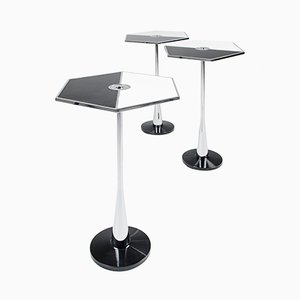
Orange Perspectiva Low Table by Fedele Papagni for Fragile Edizion
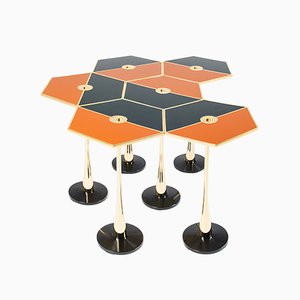
Perspectiva Low Table by Fedele Papagni for Fragile Edizione

Wool and Silk Gilio Red Rug by Jan Kath

Kuma PETit Table by Anna Gili
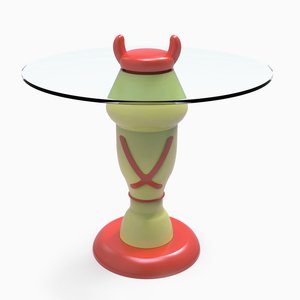
Dolly PETit Table by Anna Gili

Pig PETit Tisch von Anna Gili

Tamiso T1423 Round Low Table by Marco Zanuso Jr.

Squid Chair by Marzio Rusconi Clerici for Fragile Edizioni
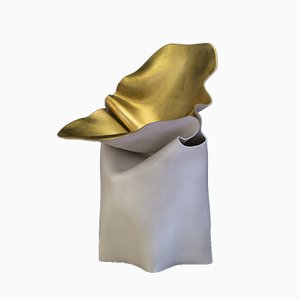
Tamiso T1406 Square Low Table by Marco Zanuso Jr.
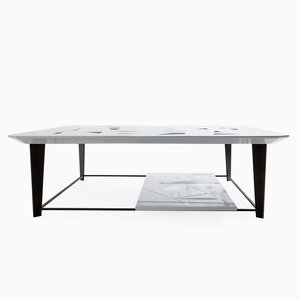
Tamiso C1431 Rotating Centerpiece by Marco Zanuso Jr.
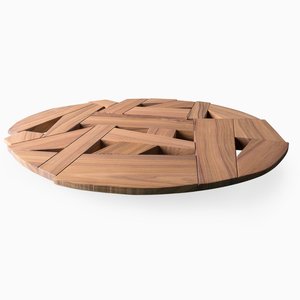
Tamiso T1413 Round Low Table by Marco Zanuso Jr.
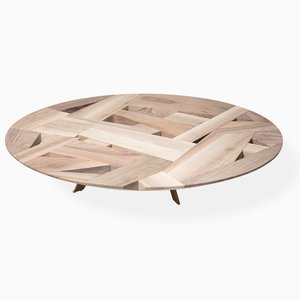
Tamiso C1467 Wall-Mounted Console by Marco Zanuso Jr.

Tamiso C1466 Wall-Mounted Console by Marco Zanuso Jr.
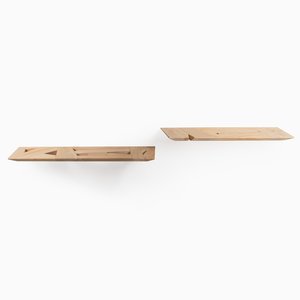
Deriva Decoration 3 Hanging Lamp by Alessandro Mendini

Deriva Decoration 2 Hanging Lamp by Alessandro Mendini

Deriva Decoration 1 Hanging Lamp by Alessandro Mendini
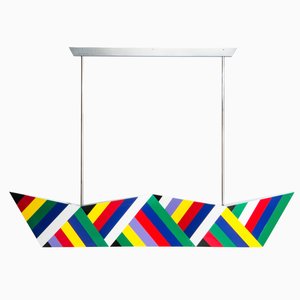
Deriva Fluorescent Orange Hanging Lamp by Alessandro Mendini
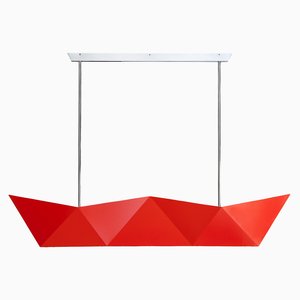
Deriva Pearl Violet Hanging Lamp by Alessandro Mendini

Jellyfish Table Lamp by Marzio Rusconi Clerici for Fragile Edizioni

Jellyfish Sculpture by Marzio Rusconi Clerici for Fragile Edizioni


